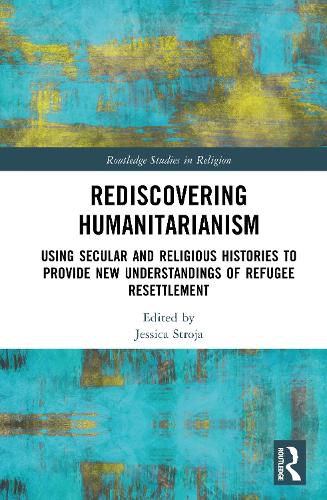Readings Newsletter
Become a Readings Member to make your shopping experience even easier.
Sign in or sign up for free!
You’re not far away from qualifying for FREE standard shipping within Australia
You’ve qualified for FREE standard shipping within Australia
The cart is loading…






This book provides a new approach to understanding the histories of refugee resettlement and their relevance for contemporary emergencies. By drawing on histories of faith-based humanitarianism from 1917 to the present, it explores how faith-based organisations have engaged with refugee aid and the efforts of other secular humanitarian movements.
This book explores understandings of humanitarianism and refugee resettlement through the lens of faith-based histories and intersections with secular humanitarian movements. It uses these histories to understand trends in humanitarian development and interactions between multiple organisations that have held ongoing roles in refugee emergencies. Exploring interactions between these organisations provides new ways of understanding humanitarianism and trends in the delivery of refugee aid. As the number of refugees requiring assistance continues to increase globally, understanding trends in this historical development has never been more important.
This book provides new ways to understand the provision of refugee aid via a broad spectrum of organisations rather than groups from separate "categories" acting in isolation. Despite the frequent marginalisation of faith-based organisations, the book shows they have reframed humanitarian efforts. This provides researchers, policy makers and practitioners with new ways to approach this challenge and the historical development of refugee aid.
$9.00 standard shipping within Australia
FREE standard shipping within Australia for orders over $100.00
Express & International shipping calculated at checkout
This book provides a new approach to understanding the histories of refugee resettlement and their relevance for contemporary emergencies. By drawing on histories of faith-based humanitarianism from 1917 to the present, it explores how faith-based organisations have engaged with refugee aid and the efforts of other secular humanitarian movements.
This book explores understandings of humanitarianism and refugee resettlement through the lens of faith-based histories and intersections with secular humanitarian movements. It uses these histories to understand trends in humanitarian development and interactions between multiple organisations that have held ongoing roles in refugee emergencies. Exploring interactions between these organisations provides new ways of understanding humanitarianism and trends in the delivery of refugee aid. As the number of refugees requiring assistance continues to increase globally, understanding trends in this historical development has never been more important.
This book provides new ways to understand the provision of refugee aid via a broad spectrum of organisations rather than groups from separate "categories" acting in isolation. Despite the frequent marginalisation of faith-based organisations, the book shows they have reframed humanitarian efforts. This provides researchers, policy makers and practitioners with new ways to approach this challenge and the historical development of refugee aid.